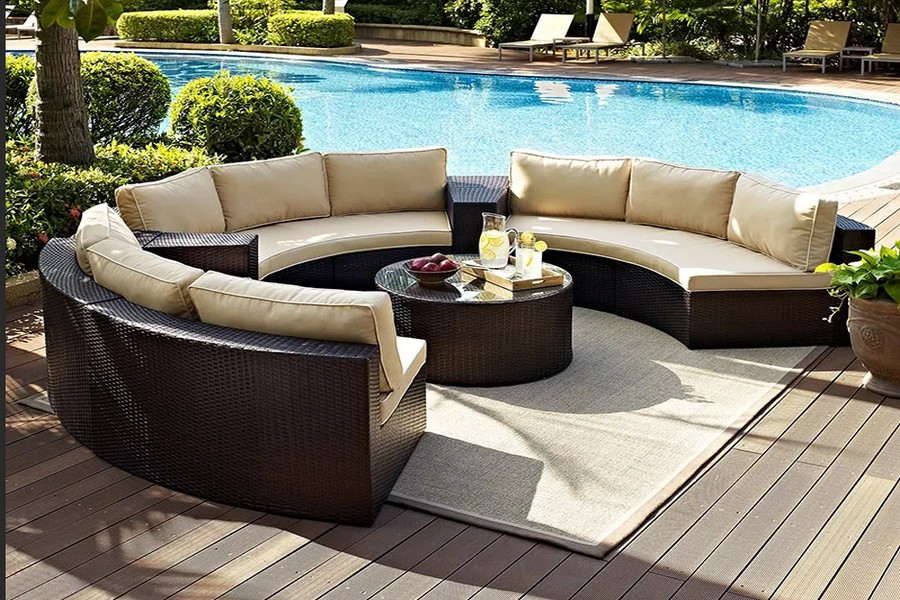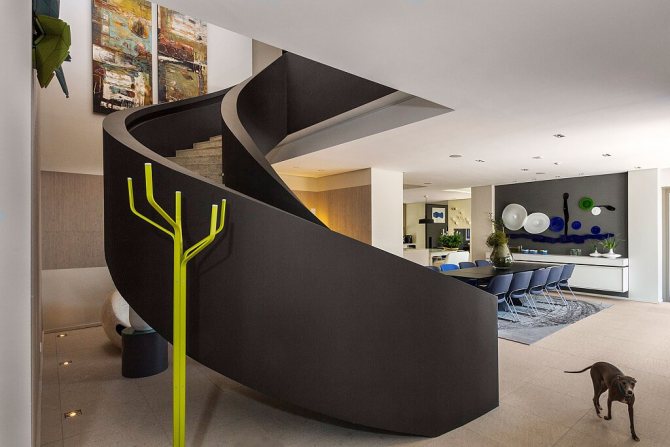
Comparison of garden furniture: polyrattan, polyrattan and rattan - what to choose?
Content
Garden furniture can be made from a variety of materials. Especially popular are rattan and its synthetic counterparts: polyrattan and polyrattan. But how do these three types of material differ? In our guide, you can read about the differences and similarities, as well as the advantages and disadvantages of individual materials.
The material is one of the most important criteria when choosing garden furniture. The resistance of accessories to weather conditions, the frequency of their maintenance and the ease of cleaning depend on it. Unlike living room or bedroom furniture, outdoor furniture is subject to changing conditions. High humidity, UV rays, rainstorms and snowfalls can all take a toll on outdoor furniture.
For this reason, garden furniture is most often made from more durable materials such as metal, wood or rattan and its improved variants - polyrattan and polyrattan. It is the last three materials that enjoy unflagging popularity due to their adaptation to external conditions and appearance.
How is rattan different from synthetic counterparts?
Rattan wood is actually fibers derived from palm vines (rattan), sometimes also referred to as Indian cane or rattan cane. This material has been used for thousands of years, especially in Asian cultures. Although it is woven, it should not be confused with weaving, which is made from wicker. These materials differ in appearance - but if you are not able to tell them apart at first glance, just touch them. Wicker creaks under pressure, rattan does not.
Rattan is much less weather resistant than its synthetic counterparts. However, it has an advantage over them in terms of metamorphosis. Rattan garden furniture is easy to stain. However, in the case of polyrattan and polyrattan, this is quite difficult, since the adhesion of the paint is much lower.
Benefits of Rattan - Why Invest in Rattan Furniture?
The main advantages of rattan are:
- flexibility - thanks to him, you can easily create intricate pigtails from it;
- ease – rattan accessories and furniture weigh very little, which makes them suitable for outdoor use – they are easy to carry from place to place or store in utility rooms;
- unique look - This is of course an individual matter, depending on aesthetic preferences. However, it is impossible to deny the charm of rattan!
- weather resistance - rattan is sufficiently resistant to temperature extremes and moisture, although it is not suitable for year-round use.
Polyrattan vs polyrattan, is it the same material?
When looking at garden furniture offers, the question may arise: is polyrattan the same as polyrattan? Yes! These names are interchangeable and mean synthetic rattan. So there is no difference between polyrattan and polyrattan - they are the same material. It is an improved version of natural rattan, more resistant to external factors and mechanical damage. It is made of high quality polyethylene fibers, the structure of which resembles natural rattan.
Technoratang - why is it worth investing in?
Polyrattan garden furniture is suitable for outdoor use all year round. In winter, they do not even need to be hidden - they are completely waterproof and resistant to extreme temperatures. And while manufacturers generally recommend using covers during the fall and winter months, even without them, furniture should survive the coldest season without any damage. A different situation is in the case of rattan models, which, under the influence of frost, can crumble and break.
Thanks to hand weaving, poly rattan furniture provides comfort comparable to natural rattan, and at the same time is more durable even under heavy loads. The only drawback of this type of accessories is the inability to paint them with ordinary paint. Colorful rattan furniture is powder coated.
Polyrattan and polypropylene - how do they differ from each other?
However, you must be careful when choosing garden furniture. It may happen that the manufacturer uses the term "polyrattan" to refer to another plastic - polypropylene. It is also plastic, but worse in quality. There are quite a few differences between synthetic rattan and polypropylene fiber. These include, among others:
- the weight – polyrattan is heavier than polypropylene and therefore less hard;
- flexibility - polypropylene is more elastic, but at the same time it is easier to mechanical damage;
- weather resistance - polypropylene is more resistant to temperature fluctuations and changes, as well as high humidity and UV rays;
- lower comfort – polypropylene fibers are much easier to heat up. In addition, furniture from them is not hand-woven, which makes it more rigid and requires the placement of a cushion on the seat.
As you can see, most of the differences speak in favor of polyrattan. This is reflected in the price - polypropylene furniture is much cheaper.
Tech rattan is in no way inferior to natural rattan, and at the same time it is more versatile. Not surprisingly, it is one of the most popular raw materials for the production of garden furniture. Try it yourself – in our offer you will find ready-made sets and individual rattan furniture in various shades and shapes.
:

